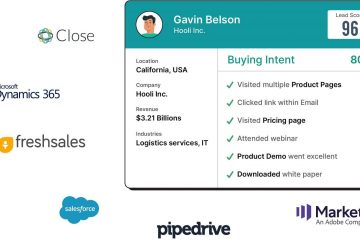What are Print Ads? 12 Examples For 2024
How likely are you to remember a bunch of text compared to images? Our marketing ancestors understood this centuries ago, leading to the birth of print advertising.
Historians state that the earliest traces of print advertising date back to around 3000 BC in Egypt. You read that right! A papyrus fragment was written on behalf of Hapu, the weaver, who was trying to locate a lost slave. (Awkward, right?)
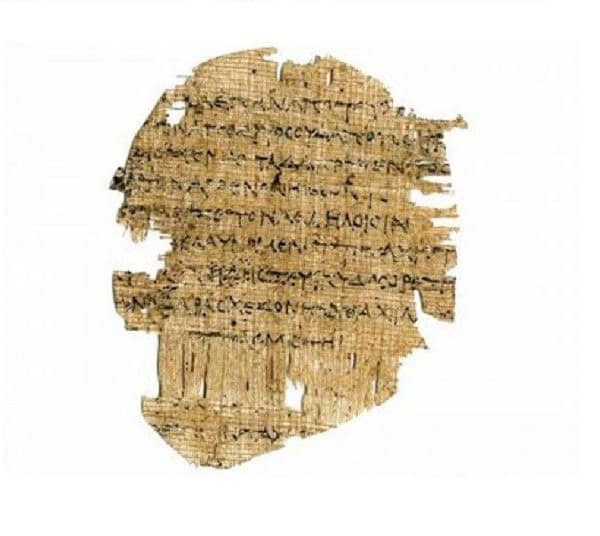
Funnily enough, he also included some self-promotion at the end of the message. Sounds familiar?
While this early attempt was entirely text-based, eye-catching imagery began appearing in advertisements a few dozen centuries later, laying the foundation for the modern print ads we still see today.
However, with the overwhelming number of ads we are exposed to daily, it’s natural to forget most of them. Our brains are conditioned to recognize ads and filter out many (as discussed in “Thinking, Fast and Slow“).
That’s where creativity comes into play. A unique, attention-grabbing ad can help your brand stand out from the clutter and capture the audience’s attention. In this article, we’ll delve into the mechanics of print advertising and provide inspiring examples from leading brands to help spark fresh ideas for your next campaign.

What are Print Ads?
Print advertising involves reaching customers using physically printed media. While traditionally seen in newspapers, magazines, and other hard-copy formats, many of today’s print ads are also distributed digitally through the internet.
One of the key advantages of print advertising is its tangibility. Physical printed materials, such as catalogs, brochures, and direct mail pieces, offer a tactile experience that can leave a lasting impression on consumers.
In modern marketing, print advertising is often used in conjunction with digital efforts to create a cohesive and integrated campaign. By combining the tangibility and credibility of print with the reach and versatility of digital platforms, businesses can create a powerful and engaging brand experience for their target audience.
Types of Print Advertising
Print advertising encompasses a wide range of formats and mediums, each with its own advantages and target audience. These are:
1. Newspapers:
Newspapers offer broad reach, distributing ads to a large audience. By partnering with local newspapers, advertisers can also effectively target specific geographic regions.
2. Magazines:
Magazines have a more niche audience than newspapers but allow brands to connect deeply with particular interests and demographics, ensuring a higher impact in specific target groups.
Though not a traditional print medium, social media plays a crucial role in disseminating high-quality print ads, helping brands leverage the power of online marketing channels to amplify their campaigns.
4. Direct Mail:
Brochures, flyers, and cards are powerful tools that allow brands to directly reach their audience. Mailed directly or handed out in person, they offer a personal touch that resonates with recipients.
5. Posters and Billboards:
Posters and billboards are prominent, large-format advertisements that command attention. Strategically placed in high-traffic areas, these ads captivate the gaze of daily commuters and travelers, leaving a memorable impression.
Top 12 Print Ads Examples for 2024
To tickle your brains and spark some creative ideas, here are 12 print ad examples from leading brands that can help you create your next great advert. We’ve carefully curated these from various sources, selecting ones that we believe are not only timeless but can also help ignite your creativity and give you clever ideas.
1. KFC
This ingenious advertisement from KFC employs a captivating visual metaphor to drive home the irresistible allure of their signature fried chicken. A mouth, protruding from the home button of an iPhone, evokes the overwhelming sensation of being unable to resist the temptation of their “finger-lickin’ good” chicken. This clever imagery plays on the universal, almost compulsive urge to constantly check one’s smartphone, amplifying KFC’s irresistibility and seamlessly integrating it into our daily routines. The ad brilliantly taps into the addictive nature of both technology and delicious food, creating an association between the two.
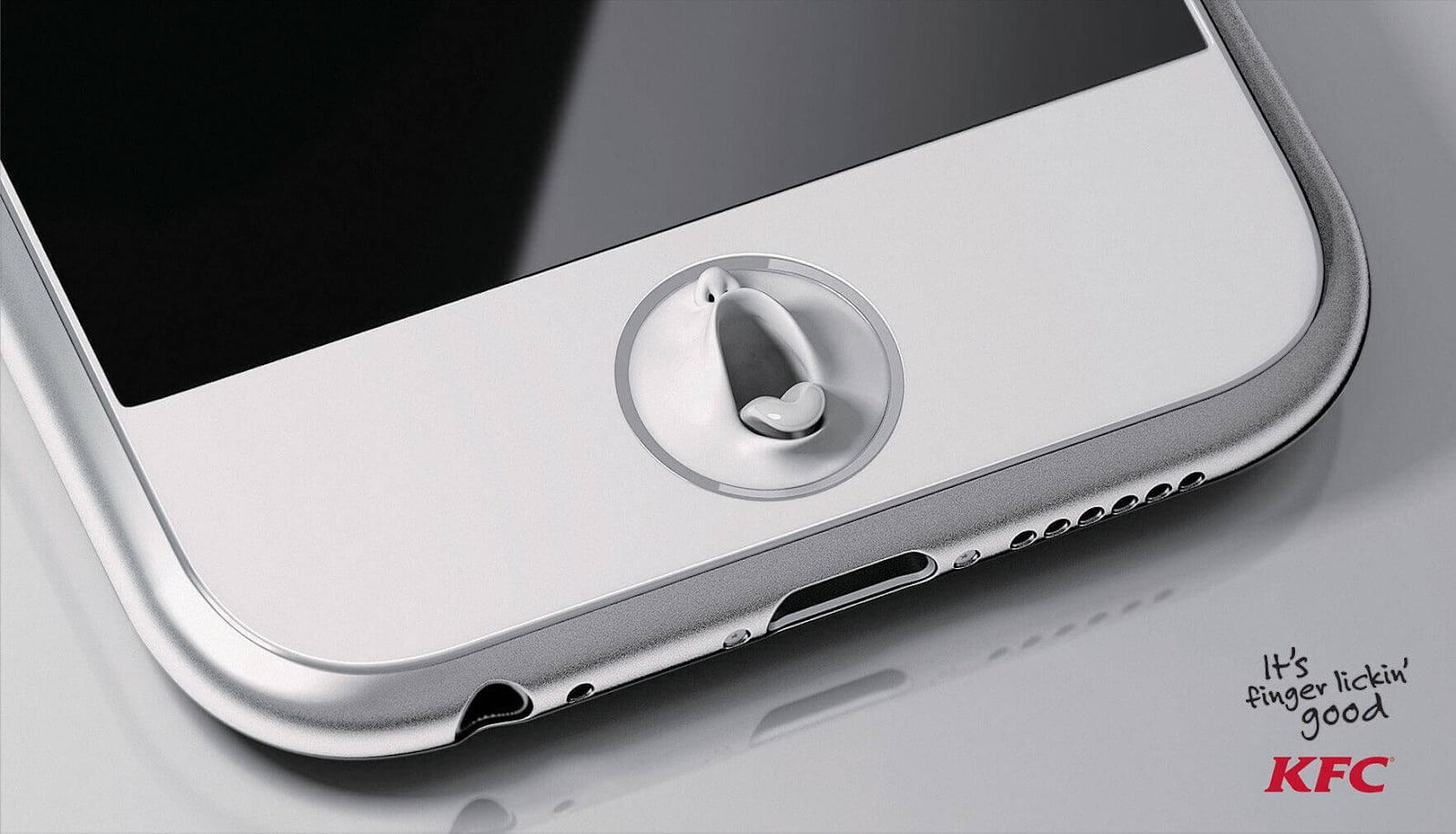
2. Aspirin by Bayer
Bayer’s Aspirin ad ingeniously addresses the stress-induced headaches of modern workplaces. By coining the term “workache,” it humorously acknowledges the discomfort experienced in professional environments. The human figure made from a stapler vividly illustrates this strain, making the ad both relatable and visually striking. The clever combination of humor and relatability makes it memorable while emphasizing Bayer’s understanding of professional challenges.

3. Pepsi
In this audacious print advertisement, Pepsi takes a playful jab at their long-standing rival, Coca-Cola. By cleverly emphasizing the “ok” in “Coke,” the ad subtly implies that their competitor’s product is merely mediocre, lacking the superior taste and refreshment offered by Pepsi. Furthermore, the ad boldly asserts that fried chicken pairs better with Pepsi Max, appealing directly to the taste buds of their target audience and encouraging them to ditch their usual cola in favor of Pepsi for their next meal. This cheeky campaign exemplifies Pepsi’s willingness to directly challenge its main competitor while positioning itself as the more flavorful and satisfying choice.
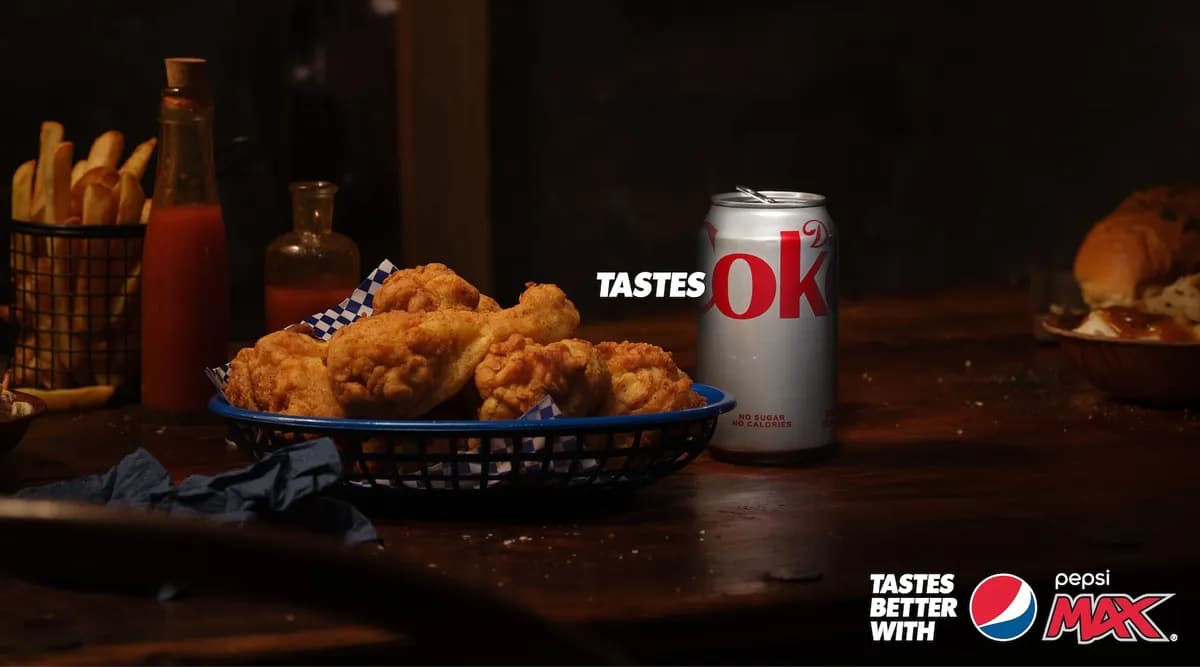
4. Kitkat
KitKat’s famous “break” messaging persists, encouraging consumers to take moments of relaxation amid their hectic schedules. The ad positions their chocolate wafer bar as a perfect break from meetings, resonating with consumers seeking comfort and simplicity. This strategic approach ensures KitKat remains relevant and beloved for those looking for a quick escape.
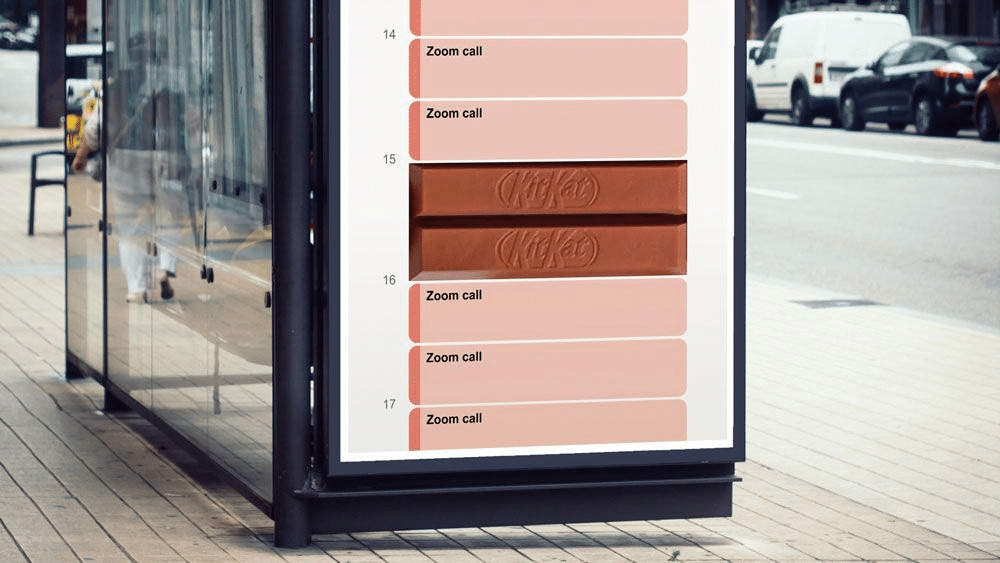
5. Pepsi (again)
In another playful jab at Coca-Cola, Pepsi wishes its rival a “scary Halloween,” humorously suggesting that being Coke during the spooky season is terrifying. The campaign aligns Pepsi with a playful, light-hearted identity, portraying it as willing to engage in friendly rivalry. This approach makes Pepsi the fun, approachable choice for consumers.

6. Chupa Chups
Chupa Chups’ advertising campaign tackles the growing concern about excessive sugar content in consumer products with a smart, visually appealing twist. The ad creatively depicts ants ignoring their sugar-free lollipops, a clever metaphor that portrays the product as a healthier alternative to traditional sweets while remaining equally appealing and tempting. By directly addressing health-conscious consumers’ desires for lower-sugar options, the campaign positions Chupa Chups as a brand that understands and caters to modern dietary preferences without sacrificing taste or enjoyment. This innovative approach showcases the brand’s commitment to adapting to evolving consumer trends while maintaining their signature playful spirit.
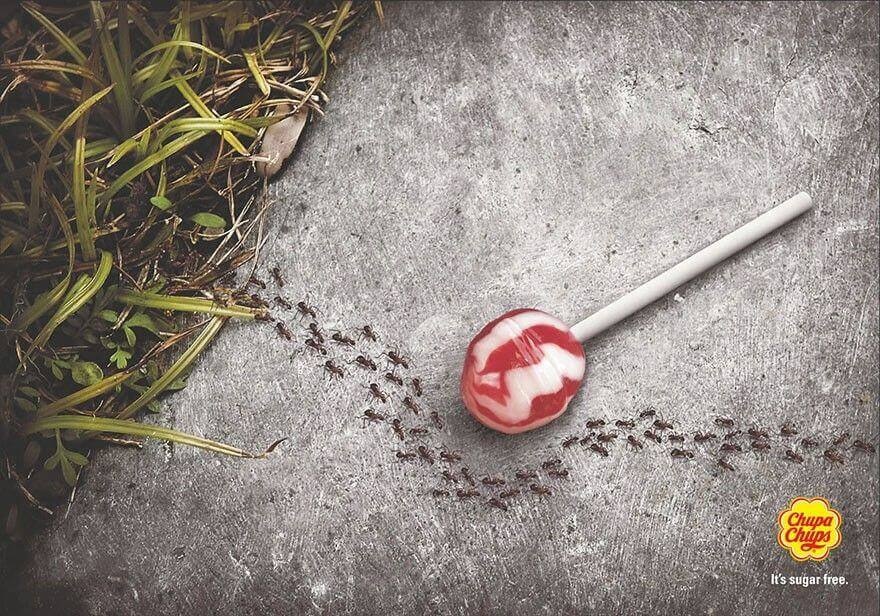
7. WWF
The World Wildlife Fund (WWF) uses a haunting image of an elephant disintegrating into dust to deliver a stark message about climate change’s effects on wildlife. The powerful visual aims to shock viewers into recognizing the urgency of climate action and protecting vulnerable species. This deeply emotional ad highlights the fragility of these creatures and underscores the importance of global environmental preservation.

8. Ikea
If you stay up-to-date on tech, you might remember Apple launching an updated Mac Pro model that looked like a chase-grater. With the tagline “Designed for apples,” Ikea injects humor into its marketing campaigns while promoting its practical kitchen gadgets. This ad reflects Ikea’s talent for combining cultural awareness, humor, and product promotion into one memorable campaign.
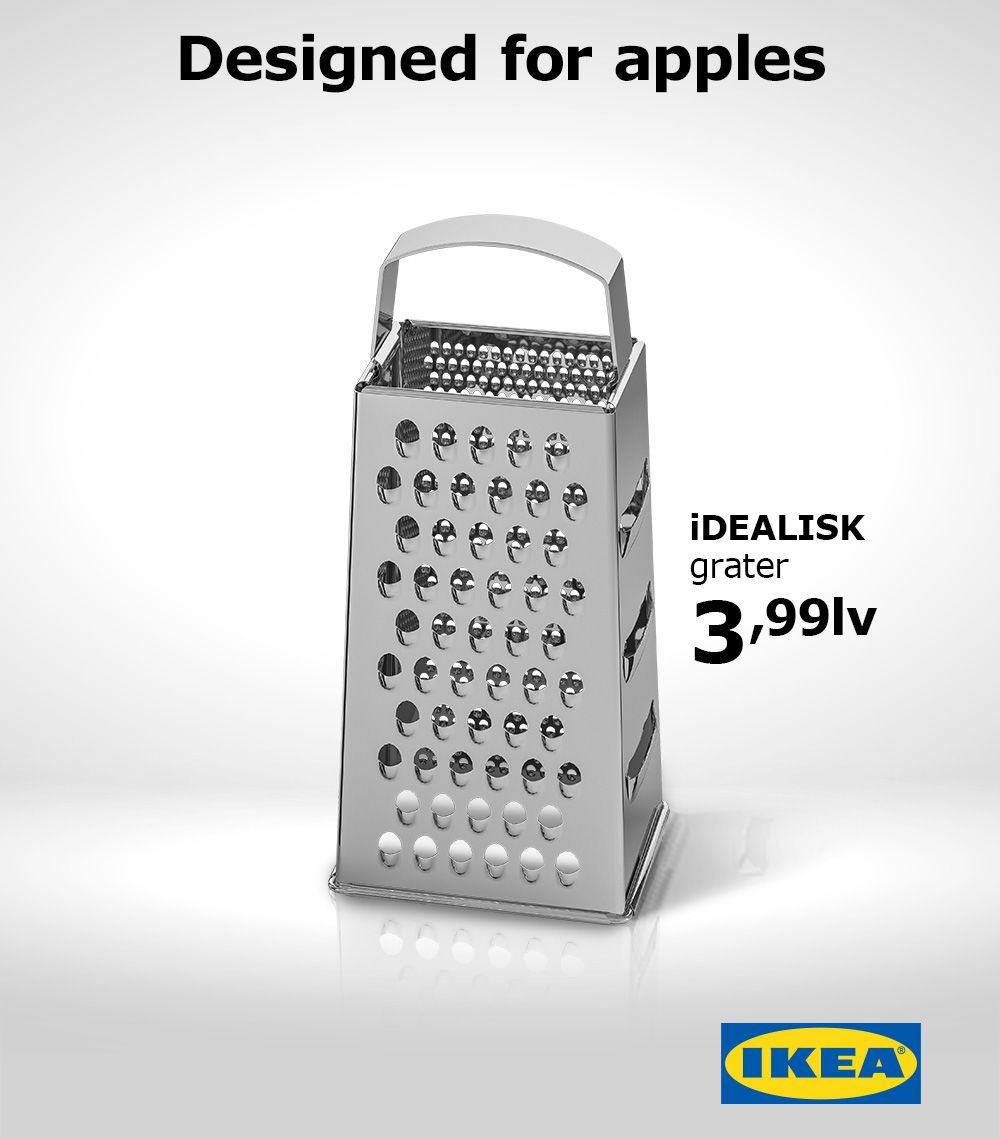
9. Marmite
Known for its polarizing nature, Marmite parallels the Brexit debate with a clever ad campaign. The iconic “love it or hate it” phrase mirrors the divisive nature of Brexit, humorously drawing a parallel between the spread and the political issue. Marmite remains culturally relevant, reinforcing its reputation for eliciting strong reactions.

10. Ogilvy
Ogilvy’s campaign uses striking visuals to raise awareness of plastic pollution. By linking water pollution to our food supply, it underscores the need to curb plastic waste and shows how ecosystems are interconnected. The hard-hitting message inspires viewers to address the environmental crisis and make a more sustainable future.
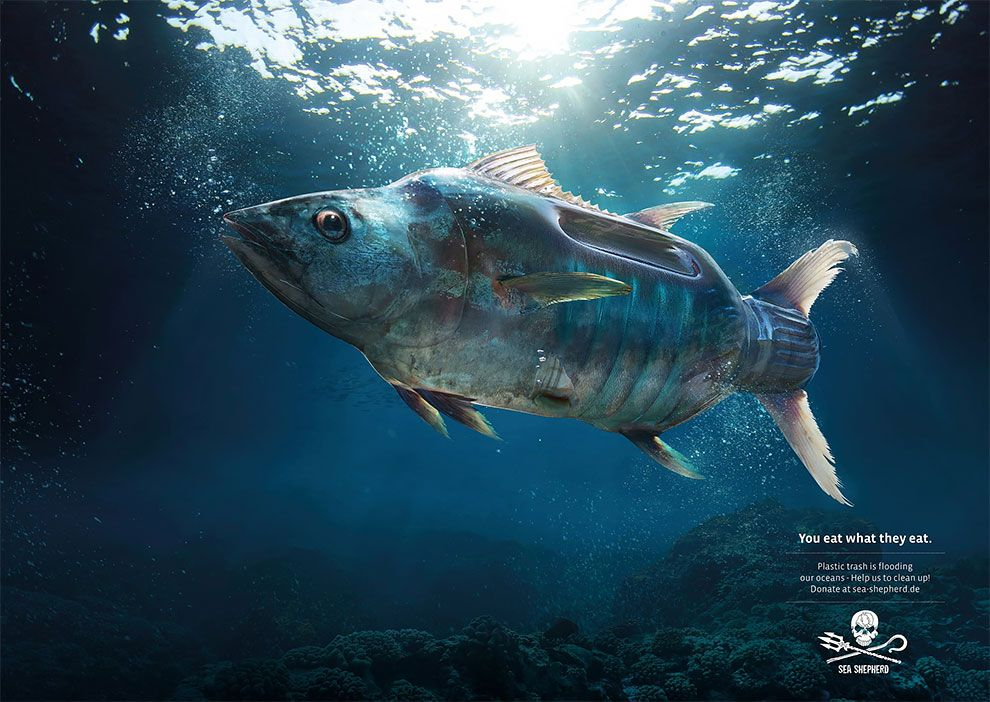
11. McDonald’s
In a minimalist yet striking advertisement, McDonald’s cleverly employs the creative use of lamppost lighting to evoke their iconic golden arches logo. This simple yet effective visual cue subtly reminds customers that McDonald’s is always there to satisfy their late-night cravings. The understated design allows the message to shine through, emphasizing the simplicity and universality of the McDonald’s brand. By leveraging the recognizability of their logo in an innovative way, this ad reinforces the company’s ubiquitous presence and position as a reliable source of comfort food, no matter the hour.

12. Marshall
In their clever “Hard Rock” and “Metal” campaigns, Marshall features literal rocks wearing headphones to deliver visual puns. The humorous campaign connects to their music heritage while appealing to rock fans. By embracing their roots and humor, Marshall resonates with music fans, reinforcing its iconic legacy while remaining fresh.
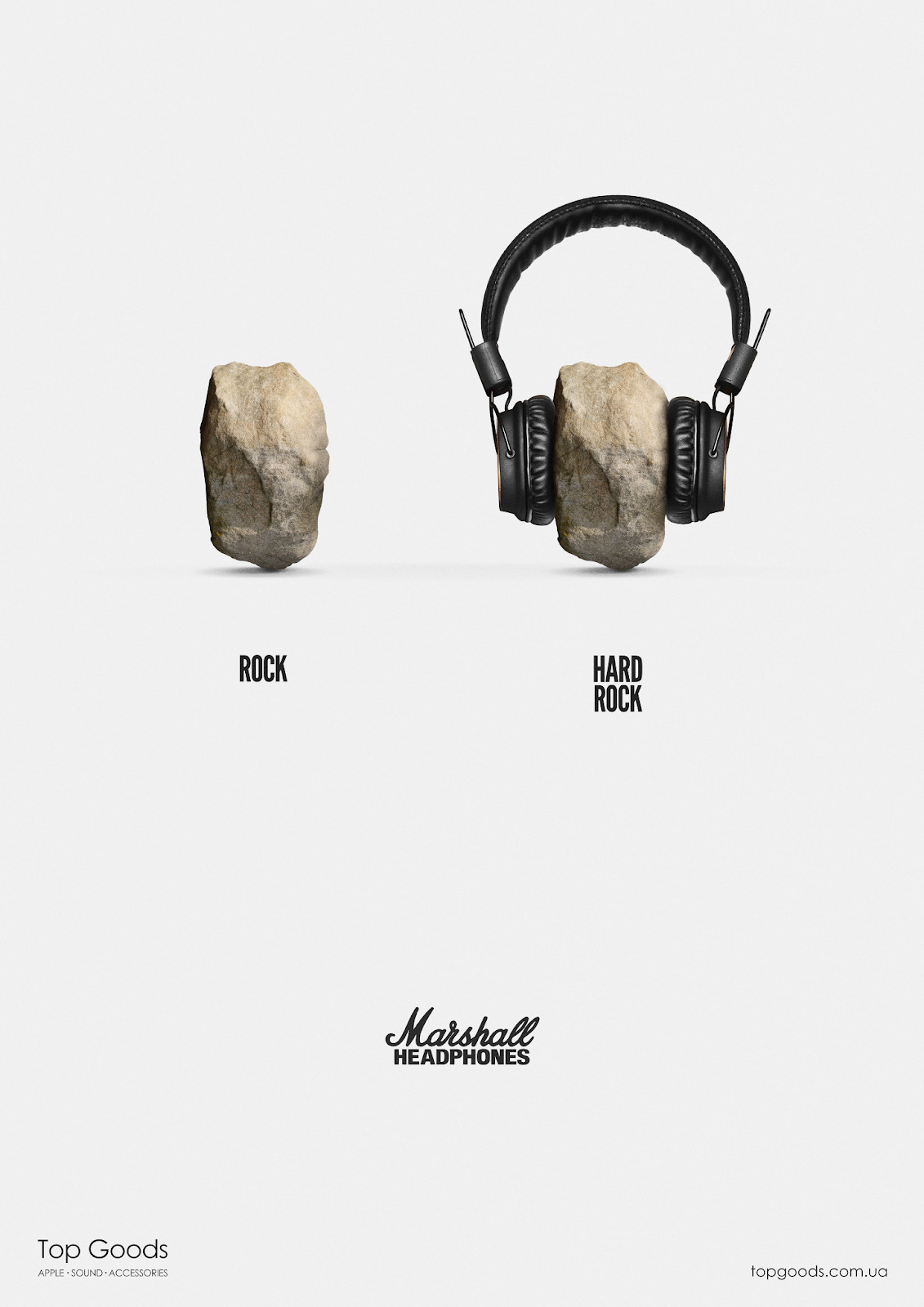
Final Thoughts
Print advertising continues to thrive even in an era dominated by digital marketing. Reports suggest that more than six in ten people in the U.S. read newspapers weekly, and 79% of them took some form of action after reading a print ad. This underscores the resilience and power of print advertising, even in the face of digital competition.
However, many print ads now also appear on online platforms, extending their reach and impact. The best campaigns captivate audiences with clever visuals, humor, and cultural insights, leaving a lasting impression. Whether playfully ribbing rivals or raising awareness of critical global issues, these ads show that print is uniquely capable of delivering impactful messages. By drawing inspiration from these examples, marketers can harness the power of print to connect with their audience and create unforgettable campaigns across all forms of media.
Sell more, understand your customers’ journey for free!
Sales and Marketing teams spend millions of dollars to bring visitors to your website. But do you track your customer’s journey? Do you know who buys and why?
Around 8% of your website traffic will sign up on your lead forms. What happens to the other 92% of your traffic? Can you identify your visiting accounts? Can you engage and retarget your qualified visitors even if they are not identified?
